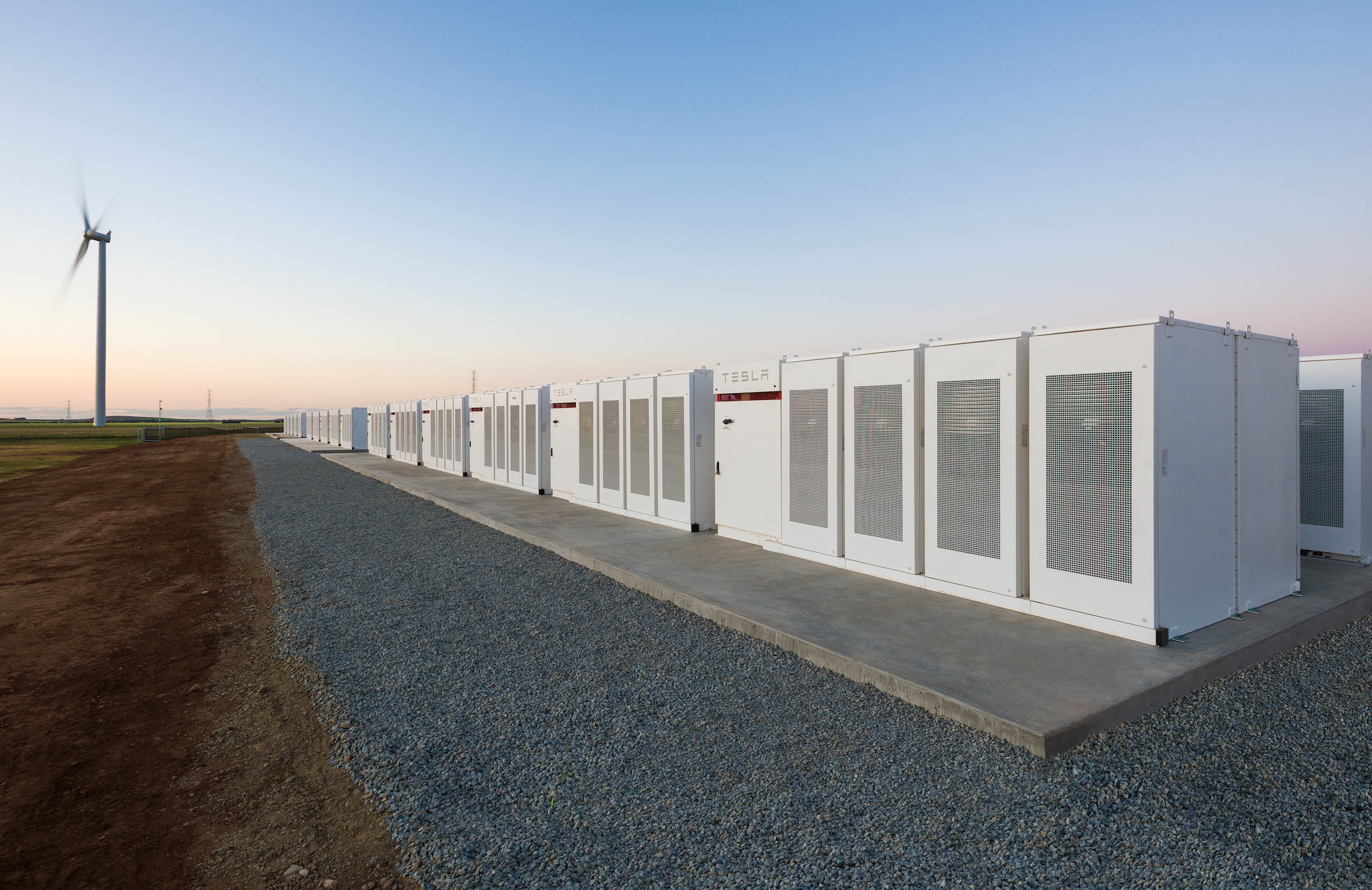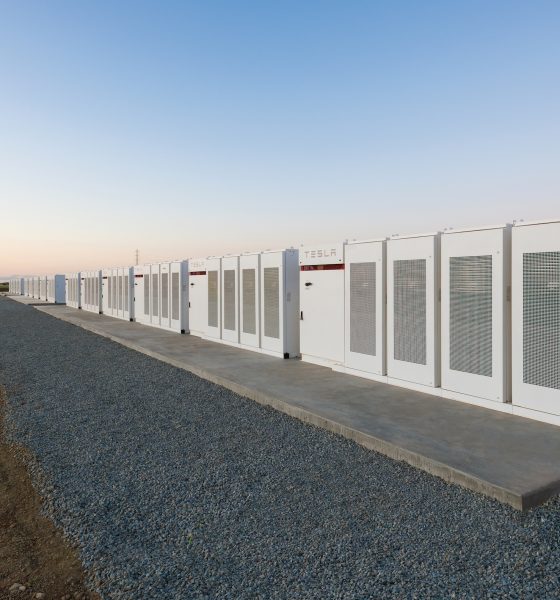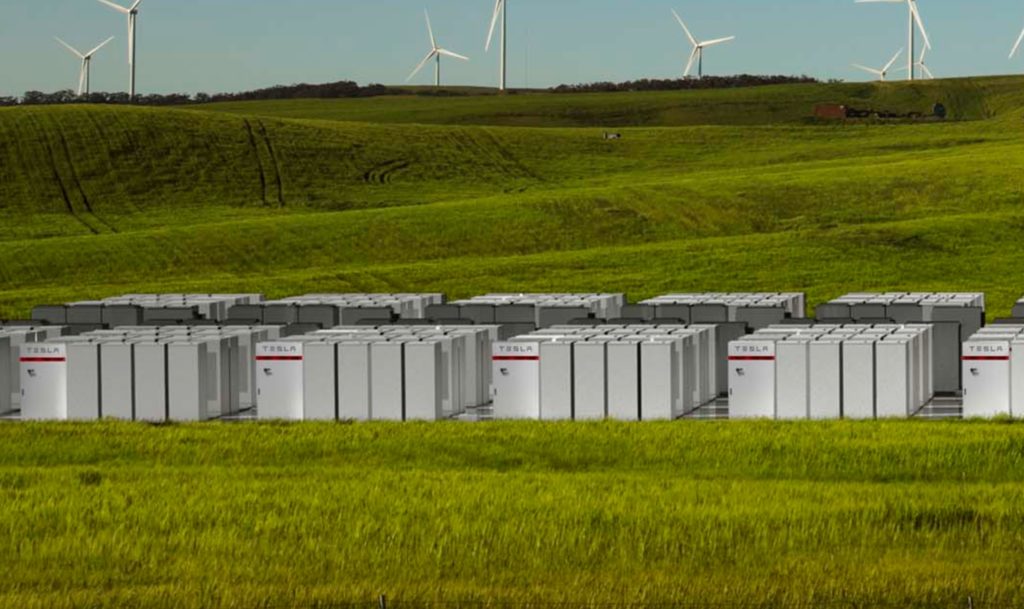

Energy
Tesla’s success in Australia opens up opportunity for 2nd big battery project in country
Following Tesla’s successful deployment of the world’s largest battery in South Australia, carrying out CEO Elon Musk’s 100-day target to install a grid-scale Powerpack battery unit, or the system would be free, another state in the land down under has lined up as Tesla Energy’s next customer. As noted in a recent report from the Sydney Morning Herald, Victoria has joined South Australia in its push towards a large-scale renewable energy system.
Tesla’s South Australia Powerpack facility currently stands as the largest lithium-ion battery of its kind on the planet. Powered by clean energy from Neoen’s Hornsdale Wind Farm near Jamestown, the mammoth 100 MW/129 MWh battery is capable of powering up to 30,000 homes during blackout periods.
According to the Australian Energy Market Operator (AEMO), the Powerpack system in SA has already proven itself multiple times since it was completed, providing ample backup power and other grid services hundreds of times in December 2017 alone. More notably, Tesla’s energy system recently supplied emergency power to one of Australia’s biggest coal-fired power stations after it experienced an unexpected loss of power on December 14.
The notable success of Tesla’s South Australia facility seems to be a significant driving force for the state of Victoria, which ultimately decided to pursue a contract with the California-based electric carmaker and energy firm to install its very own Powerpack system. Victoria’s batteries would be installed in Bulgana, though at 20 MW, the system would only be 1/5th the size of South Australia’s facility.
Franck Woitiez, managing director of Neoen, a French energy firm and Tesla’s partner in the SA Powerpack system, is optimistic about the potential of Victoria’s batteries. According to the Neoen executive, the Bulgana Powerpack system might even be enough to provide adequate support for the area’s power grids in the near future.
“The performance of the South Australian battery is outstanding. The Bulgana battery is primarily going to provide energy to Nectar Farms and may support the grid in the future,” he said, according to a SMH report.

Tesla’s 100 MW/129 MWh Powerpack system dubbed as the ‘World’s largest battery’ in Jamestown, Australia
Energy officials in Victoria are also equally excited about Tesla’s upcoming Powerpack system. According to energy minister Lily D’Ambrosio, the Elon Musk-led energy company’s forthcoming project would play a vital role in Victoria’s pursuit of renewable energy.
“(The agreement is) a major step forward for communities, businesses and the renewable energy industry. This project will reduce greenhouse gas emissions while helping meet Victoria’s renewable energy generation targets,” the energy minister said.
John Grimes, head of the Smart Energy Council, further stated that the clean energy initiatives of South Australia, and now Victoria, are but the beginning. Grimes also said that 2018 might very well be a pivotal year for renewable energy.
“What we’re seeing with the South Australian battery, what we’re seeing in Victoria, is really the tip of the iceberg for a pipeline of projects that’s coming along. This is a breakout year for energy storage.”
Tesla’s South Australian Powerpack system initially captured the public’s eye after Elon Musk and fellow billionaire Mike Cannon-Brookes, who co-founded Atlassian, conducted a friendly wager on Twitter. During the two billionaires’ Twitter exchange, Musk raised the stakes of the bet by declaring that Tesla would build a working Powerpack system for SA in 100 days or it would be free. Not long after, South Australia became home to Tesla’s largest lithium-ion battery system in the world.

Energy
Tesla starts hiring efforts for Texas Megafactory
Tesla’s Brookshire site is expected to produce 10,000 Megapacks annually, equal to 40 gigawatt hours of energy storage.

Tesla has officially begun hiring for its new $200 million Megafactory in Brookshire, Texas, a manufacturing hub expected to employ 1,500 people by 2028. The facility, which will build Tesla’s grid-scale Megapack batteries, is part of the company’s growing energy storage footprint.
Tesla’s hiring efforts for the Texas Megafactory are hinted at by the job openings currently active on the company’s Careers website.
Tesla’s Texas Megafactory
Tesla’s Brookshire site is expected to produce 10,000 Megapacks annually, equal to 40 gigawatt hours of energy storage, similar to the Lathrop Megafactory in California. Tesla’s Careers website currently lists over 30 job openings for the site, from engineers, welders, and project managers. Each of the openings is listed for Brookshire, Texas.
The company has leased two buildings in Empire West Business Park, with over $194 million in combined property and equipment investment. Tesla’s agreement with Waller County includes a 60% property tax abatement, contingent on meeting employment benchmarks: 375 jobs by 2026, 750 by 2027, and 1,500 by 2028, as noted in a report from the Houston Business Journal. Tesla is required to employ at least 1,500 workers in the facility through the rest of the 10-year abatement period.
Tesla’s clean energy boom
City officials have stated that Tesla’s arrival marks a turning point for the Texas city, as it highlights a shift from logistics to advanced clean energy manufacturing. Ramiro Bautista from Brookshire’s economic development office, highlighted this in a comment to the Journal.
“(Tesla) has great-paying jobs. Not just that, but the advanced manufacturing (and) clean energy is coming to the area,” he said. “So it’s not just your normal logistics manufacturing. This is advanced manufacturing coming to this area, and this brings a different type of job and investment into the local economy.”
Energy
Tesla and Samsung SDI in talks over new US battery storage deal: report
The update was related by industry sources and initially reported by South Korean news outlets.

Recent reports have suggested that Tesla and Samsung SDI are in talks over a potential partnership to supply batteries for large-scale energy storage systems (ESS).
The update was related by industry sources and initially reported by South Korean news outlets.
ESS batteries to be built at Samsung’s Indiana plant
As noted in a report from Korea JoongAng Daily, the demand for energy storage systems has been growing rapidly in North America, thanks in no small part to the surge in AI investments across numerous companies. With this in mind, Tesla has reportedly approached Samsung SDI about a potential battery supply deal.
The deal is reportedly worth over 3 trillion Korean won (approximately $2.11 billion) and will span three years, according to The Korea Global Economic Daily. A battery supply deal with Samsung SDI could make sense for Tesla as the company already has a grid-scale battery, the Megapack, which is perfect for industrial use. Samsung SDI could simply supply cells for the EV maker.
Production of the batteries would reportedly take place at Samsung SDI’s joint venture factory with Stellantis in Indiana, which is currently under construction. Samsung SDI recently announced plans to use part of that plant’s EV lines to produce cells for ESS, with a targeted capacity of 30 GWh by the end of next year.
Tesla and Samsung’s partnership
At present, only a handful of manufacturers, including Korea’s LG Energy Solution, Samsung SDI, SK On, and Japan’s Panasonic, are capable of producing energy storage-scale batteries domestically in the United States. A Samsung SDI official issued a comment about the matter, stating, “Nothing has been finalized regarding cooperation with Tesla.”
The possible energy storage system deal adds another layer to Tesla’s growing collaboration with Samsung, which is already in line as a partner in the upcoming production of Tesla’s AI5 and AI6 chips. Early sample manufacturing of the AI6 is expected to begin in South Korea, with mass production slated for Samsung’s Texas-based Taylor foundry when it starts operations.
The AI6 chip will power Tesla’s next wave of high-volume projects, including the Optimus humanoid robot and the autonomous Cybercab service. Musk has called the partnership with Samsung a “real collaboration,” adding that he personally plans to “walk the line” at the Taylor facility to speed up progress.
Energy
Tesla VP hints at Solar Roof comeback with Giga New York push
The comments hint at possible renewed life for the Solar Roof program, which has seen years of slow growth since its 2016 unveiling.

Tesla’s long-awaited and way underrated Solar Roof may finally be getting its moment. During the company’s Q3 2025 earnings call, Vice President of Energy Engineering Michael Snyder revealed that production of a new residential solar panel has started at Tesla’s Buffalo, New York facility, with shipments to customers beginning in the first quarter of 2026.
The comments hint at possible renewed life for the Solar Roof program, which has seen years of slow growth since its 2016 unveiling.
Tesla Energy’s strong demand
Responding to an investor question about Tesla’s energy backlog, Snyder said demand for Megapack and Powerwall continues to be “really strong” into next year. He also noted positive customer feedback for the company’s new Megablock product, which is expected to start shipping from Houston in 2026.
“We’re seeing remarkable growth in the demand for AI and data center applications as hyperscalers and utilities have seen the versatility of the Megapack product. It increases reliability and relieves grid constraints,” he said.
Snyder also highlighted a “surge in residential solar demand in the US,” attributing the spike to recent policy changes that incentivize home installations. Tesla expects this trend to continue into 2026, helped by the rollout of a new solar lease product that makes adoption more affordable for homeowners.
Possible Solar Roof revival?
Perhaps the most intriguing part of Snyder’s remarks, however, was Tesla’s move to begin production of its “residential solar panel” in Buffalo, New York. He described the new panels as having “industry-leading aesthetics” and shape performance, language Tesla has used to market its Solar Roof tiles in the past.
“We also began production of our Tesla residential solar panel in our Buffalo factory, and we will be shipping that to customers starting Q1. The panel has industry-leading aesthetics and shape performance and demonstrates our continued commitment to US manufacturing,” Snyder said during the Q3 2025 earnings call.
Snyder did not explicitly name the product, though his reference to aesthetics has fueled speculation that Tesla may finally be preparing a large-scale and serious rollout of its Solar Roof line.
Originally unveiled in 2016, the Solar Roof was intended to transform rooftops into clean energy generators without compromising on design. However, despite early enthusiasm, production and installation volumes have remained limited for years. In 2023, a report from Wood Mackenzie claimed that there were only 3,000 operational Solar Roof installations across the United States at the time, far below forecasts. In response, the official Tesla Energy account on X stated that the report was “incorrect by a large margin.”









